Flavor characteristics of Yejia Coffee beans taste Ethel plus Sheffield Fine Coffee hand-brewing ratio parameters
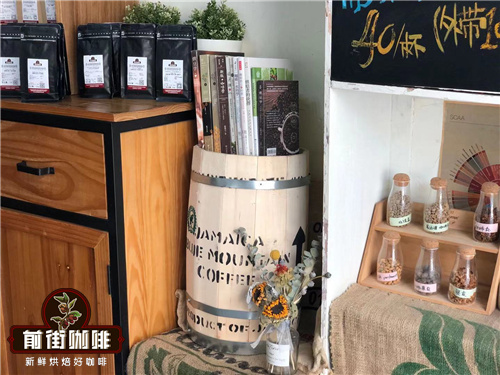
Professional coffee knowledge exchange more coffee bean information please follow the coffee workshop (Wechat official account cafe_style)
With the rise of the third wave of boutique coffee, coffee as a daily drink has gradually come into people's daily life, but a simple cup of coffee can make people have a good mood for the day. Ethiopia, as the hometown of coffee, sheep herding legends add a lot of magic color to coffee.
Essel's coffee beans are undoubtedly the most famous coffee from Yega Sheffield. The basic tonality is lemon and citrus, and the taste is very clean. Huakui Coffee from Humbera in Guji is more famous, and these two producing areas are separated by ECX because of their unique flavor. Yegashafi started out as a small town in Ethiopia, the highest coffee-producing area in the country. Yega Xuefei has many cooperatives, among which the Gottintin Cooperative and Kochel are also very well known.

Cochel is located in a small producing area southeast of Yega Sheffield, mainly planted by small farmers, with a very small planting area, about 1800-2000 meters above sea level, so coffee beans are the main source of income in this producing area. As this production area has more advanced raw bean water treatment equipment, so there has always been a high level of performance in the field of washing treatment, coffee beans with honey and citrus complex tonality of clean and sweet.
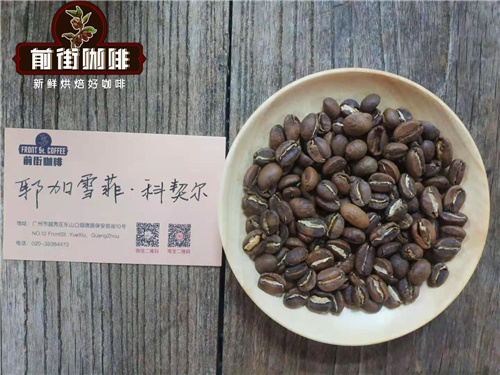
While the Godding Cooperative comes out of the Waka Cooperative, Qianjie usually uses a light baking method in order to highlight the bright acidity of Guodingding. Therefore, the flavor of citrus, black tea, flower and cream is particularly rich.
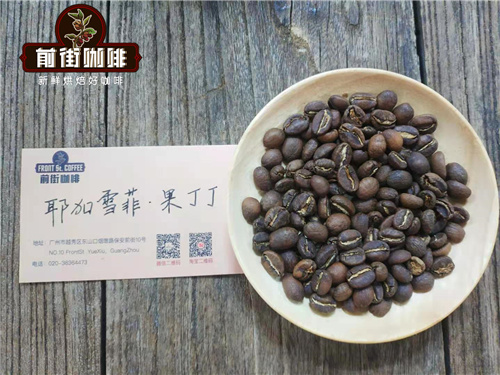
In front of the street, it is preferred to use a higher water temperature, such as 91 degrees, when cooking Yega Chuefei fruit for guests. Because the front street fruit is lightly baked, it needs a high water temperature to boil out the flavor of the fruit. Qianjie brewing coffee likes to use the powder content of 15 grams, the proportion of 1:15 powder to brew this coffee. When you drink this coffee, you will find the bright citrus fruit with acidity and distinct flavor.
When the baristas in the front street were brewing this kind of coffee, many attentive guests noticed that the beans were very uneven when they were washed with water. Then some guests questioned whether your beans were really from Ethiopia and whether they were mixed with other bad beans. So, Qianjie explains here that the beans in Qianjie must really come from Ethiopia, and the reason for the different sizes of these beans has something to do with Ethiopia's own coffee management model.
Traditionally, Yejiaxuefei coffee beans are treated by the oldest sun treatment, but due to the fact that most of the early sun-dried coffee beans are dried on the flat ground, they are inevitably contaminated with miscellaneous smells such as soil flavor and dust, coupled with the lack of reasonable screening, the quality of sun-dried beans is average. In 1972, Ethiopia introduced Central and South American washing technology to improve the quality of coffee, which made the jasmine and citrus lemon aromas of Yega Xuefei clearer and brighter, making it one of the representatives of fine coffee in the world.

As the hometown of coffee, the variety of coffee in Ethiopia is very large, and there are still a large number of wild coffee varieties in Ethiopia. Therefore, so many coffee varieties are collectively referred to as local native species. Just like most large estates, the coffee inside is planted with bourbon varieties, so the beans must be more uniform in size. Well, Qianjie is giving you an example. For example, a certain manor, a piece of land, grows bourbon coffee, tin pickup, Kaddura, Kaduai, and Castillo coffee varieties, these coffee varieties are mixed in the same field, so when farmers collect coffee, they simply do not distinguish which coffee tree species, directly receive the ripe coffee fruit in the same basket, so The coffee beans purchased by the merchants are definitely of different sizes.
Therefore, Ethiopian coffee has also produced its own grading system. According to previous accounts, generally washed coffee beans are graded using G1Magi G2, and the smaller the number is, the higher the grade is, while G3, G4 and G5 are used for sun treatment. However, it is said that a new grading standard has emerged in Ethiopia now.
If people often come to Qianjie coffee shop, there are many samples of raw and cooked beans in the shop in Qianjie. Generally speaking, raw beans washed in water are turquoise and those in the sun are yellowish green. The difference between the two is also very big. You will find that there are more silver skins of Yega Xuefei coffee beans washed with water, while the silver skins of beans treated by the sun are relatively less than those treated by water washing. Of course, the degree of baking also has a lot to do with the silver skin. The deeper the baking degree, the cleaner the silver skin will take off. Essel's coffee is generally treated in the traditional sun, but in order to steadily produce high-quality coffee beans, water washing is also used to treat coffee. Yega Xuefei fruit dingding in the front street is treated with water. There will be citrus and black tea in the entrance.

In front of the street, there is also a Yega Chuefei Red Cherry Project Coffee, which is a red cherry project from Dutch raw bean merchants and Ethiopia. The sponsors were Dutch raw bean merchants, who found that the quality of coffee in Ethiopia was often unstable, so the price of raw beans was relatively low, so Ethiopian farmers worked with Dutch raw bean merchants to implement the red cherry project.
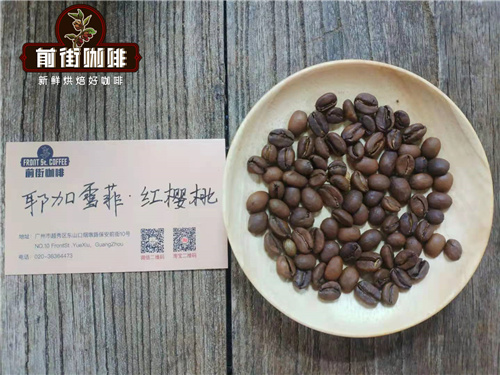
They solve the problem from the source, by raising the purchase price of high-quality raw coffee beans to encourage coffee farmers to complete every process of picking and processing coffee beans more attentively, using full manual picking in the picking stage to select coffee fruits with high maturity.
The Yega Chuefei Red Cherry Coffee first uses the oldest sun treatment, picking the full-ripe coffee fruit by hand, and then drying the treated coffee fruit. When the water content of the coffee is reduced to 12%, the coffee is shelled by a sheller, and then the defective beans are selected by hand. Therefore, the size of the coffee raw beans planned by Red Cherry is more uniform, and the brewed coffee tastes better.
Qianjie told everyone not to underestimate the silver skin, the existence of silver skin also has a great impact on coffee brewing. Because if the silver skin is too much, the flavor of the brewed coffee will be astringent. However, if the raw bean overtreats the silver skin, it will lead to a decrease in flavor.
Yega Xuefei coffee bean flavor is very clear and bright, the taste is very clean, taste buds also show a dry lemon and citrus aroma and a hint of flowers, mainly due to the use of washing treatment. The coffee beans treated by washing will be clearer in flavor and have no miscellaneous flavor, so most of the rations beans in different producing areas launched in Qianjie are treated with water, because the washed coffee beans can better reflect the most primitive flavor characteristics of a production area. Ethiopian coffee is also most famous for washing Yega Shiffi coffee beans.
For more boutique coffee beans, please add private Qianjie coffee on Wechat. WeChat account: kaixinguoguo0925
Important Notice :
前街咖啡 FrontStreet Coffee has moved to new addredd:
FrontStreet Coffee Address: 315,Donghua East Road,GuangZhou
Tel:020 38364473
- Prev
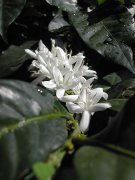
The taste of Yejashefi Coffee describes the coffee characteristics of Kongjia Coffee producing area.
Professional barista communication please follow the coffee workshop (Wechat official account cafe_style) Ethiopia Natural Yirgacheffe G1 Konga Ethiopian sun Yega Xuefei G1 witch Kong Village flavor description: dry aroma is berries, peaches and flowers, sipping the first feeling by strawberries, passion fruits and peaches, the middle is sweet cantaloupe and mango
- Next
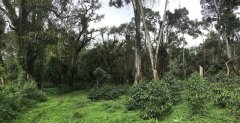
Introduction of Ethiopian Coffee Brand-Yega Sheffield producing area Cochel Kochere
For professional baristas, please follow the coffee workshop (Wechat official account cafe_style) Kochere in Gedeo, southern Ethiopia, this coffee comes from cherries grown by small farmers near the village of Cochel, between 1800 and 2000 meters above sea level, slightly higher than in other growing areas. The most common species here is
Related
- Detailed explanation of Jadeite planting Land in Panamanian Jadeite Manor introduction to the grading system of Jadeite competitive bidding, Red bid, Green bid and Rose Summer
- Story of Coffee planting in Brenka region of Costa Rica Stonehenge Manor anaerobic heavy honey treatment of flavor mouth
- What's on the barrel of Blue Mountain Coffee beans?
- Can American coffee also pull flowers? How to use hot American style to pull out a good-looking pattern?
- Can you make a cold extract with coffee beans? What is the right proportion for cold-extracted coffee formula?
- Indonesian PWN Gold Mandrine Coffee Origin Features Flavor How to Chong? Mandolin coffee is American.
- A brief introduction to the flavor characteristics of Brazilian yellow bourbon coffee beans
- What is the effect of different water quality on the flavor of cold-extracted coffee? What kind of water is best for brewing coffee?
- Why do you think of Rose Summer whenever you mention Panamanian coffee?
- Introduction to the characteristics of authentic blue mountain coffee bean producing areas? What is the CIB Coffee Authority in Jamaica?

